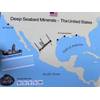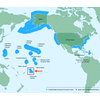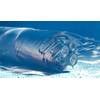Scientists from Australia’s Commonwealth Scientific and Industrial Research Organization (CSIRO) are testing to determine the safety and suitability of the candidate biocontrol agent Cyprinid herpesvirus 3 (CyHV-3) in managing European carp numbers in Australia.
European carp (Cyprinus carpio) – an invasive species of Australian waterways – was first introduced within the country more than 100 years ago and has since established in every state except the Northern Territory, adversely affecting the health of the nation’s rivers and wetlands.
With tolerance for a wide range of conditions and habitats, including low-oxygen and brackish water, the carp is considered one of the country’s major aquatic pests since it has massively spread through the Murray-Darling Basin in the late 1980s. Previously held in check by the drought, recent years of flooding rains have brought Australia’s river systems back to life, and the carp population has again expanded as a result, placing increasing pressure on waterways and native wildlife.
With the goal to one day keep carp numbers in check, a candidate biological control agent may have been identified, said CSIRO, whose scientists are investigating a specific viral disease called cyprinid herpesvirus-3, also known as koi herpesvirus (KHV), to help manage carp numbers.
The virus first appeared in Israel in 1998, and spread rapidly throughout much of the world, although not to Australia or New Zealand. It causes high death rates in common carp and in the ornamental koi carp. No other species of fish, including goldfish, are known to be affected by the virus.
CSIRO is undertaking research within the sophisticated high containment facility the CSIRO Australian Animal Health Laboratory, where it is testing to determine the safety and suitability of the virus for controlling carp.
CSIRO identified that CyHV-3 does kill the pest carps, and it kills them quickly. Current research has also shown that the virus does not develop in native Australian or any other introduced species of fish.
Over the next few years CSIRO said it will continue to test the susceptibility of other fish and amphibian species to CyHV-3 and address questions regarding the safety of possible widespread distribution of the virus, both for people and other animal species. This work is supported by the Invasive Animals Cooperative Research Centre and the release program is led by the New South Wales Department of Primary Industries. Researchers will also continue to consult widely with conservation groups, recreational fishers and resource managers.
• 














 February 2025
February 2025



